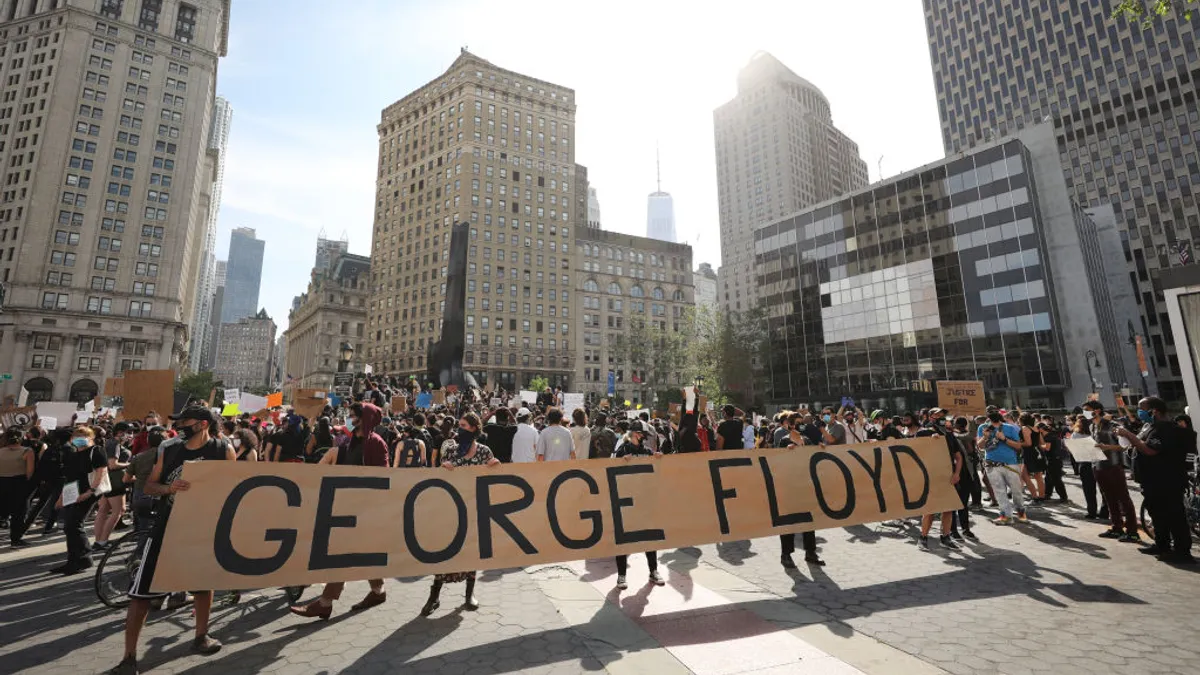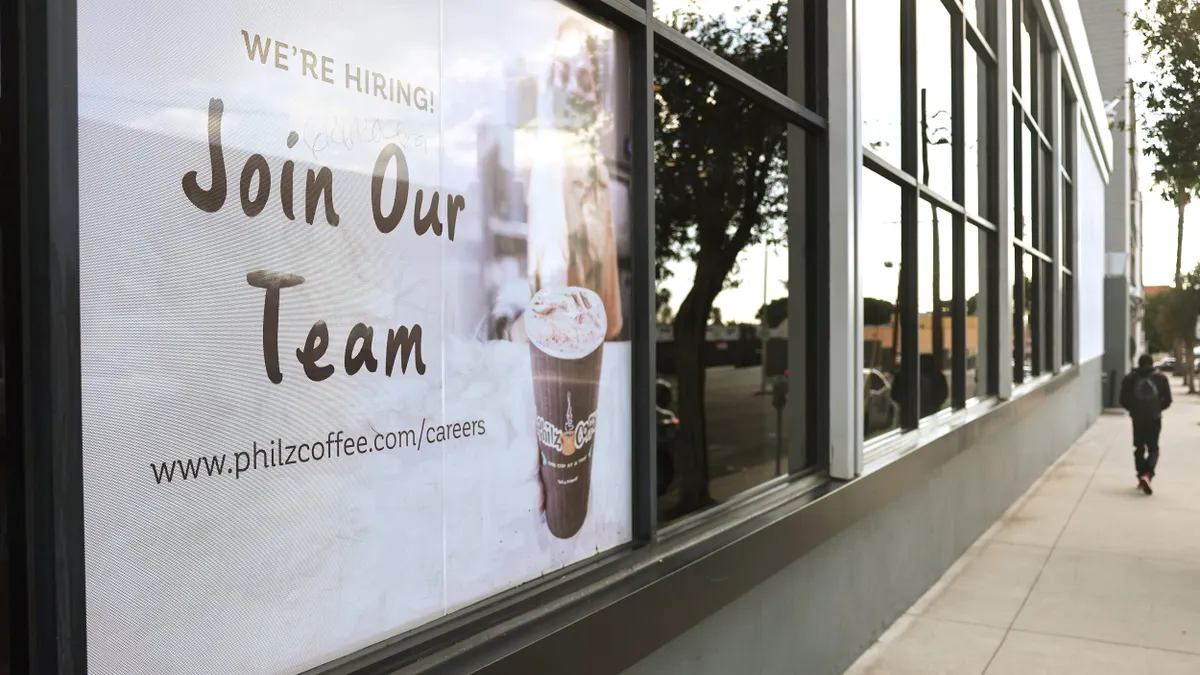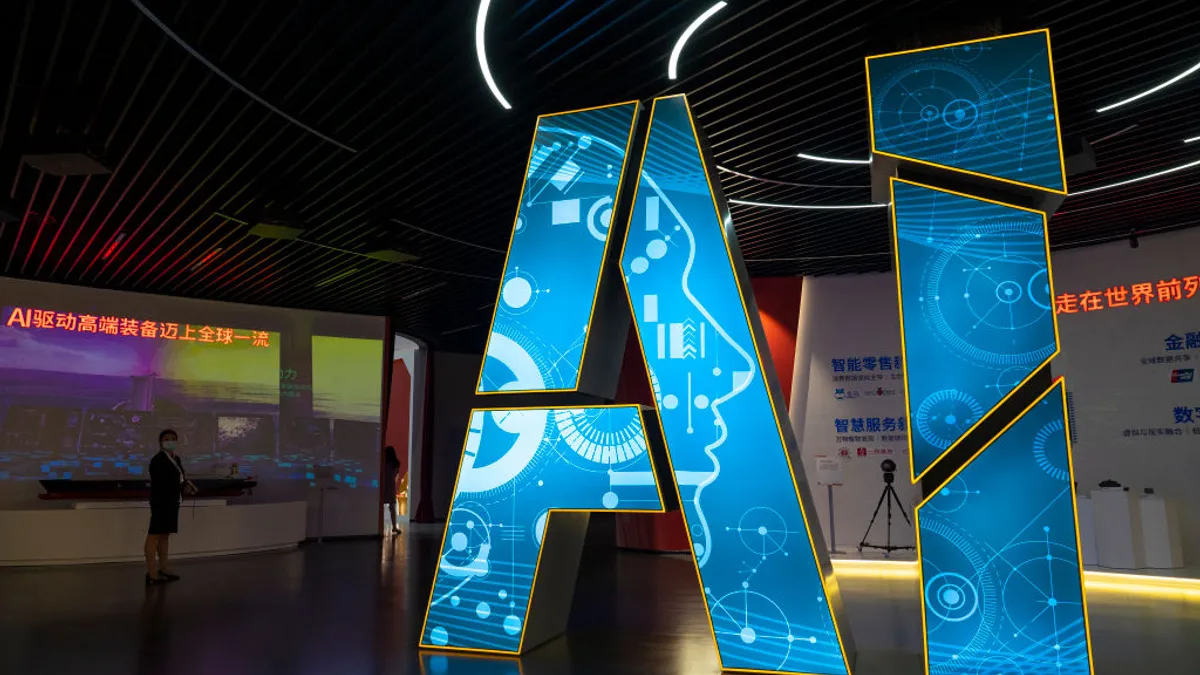On April 21, a Minneapolis jury returned its verdict, finding former police officer Derek Chauvin guilty of second-degree unintentional murder, third-degree murder and second-degree manslaughter in the May 2020 death of George Floyd.
It is the latest development in an event that held significance for HR professionals — significance that diversity and inclusion professionals do not mince words describing.
For Tara Ataya, chief people and diversity officer at Hootsuite, Floyd's murder "created a cultural awareness throughout the organization around [D&I], and it created this real-life, horrifying example of racism in our society."
It has led, she added, to a year of trauma and grief, but also one of learning, in which some organizations found a voice and a path forward in addressing inequality.
"I think [Floyd's murder] provided the most clear illustration that many corporations had ever seen of not just police brutality, but also the inherent inequities that a lot of our citizens face," said Aaron Burrell, member of Dickinson Wright's litigation practice and co-chair of the firm's diversity and inclusion committee. "Never could we have had these discussions without the framework and backdrop of a very clear instance of injustice."
2020 saw what commentators have described as a societal reckoning with issues of race, including, but not limited to, police brutality, systemic racism and economic inequality. Amid protests in several major cities, employers issued statements, made financial commitments and offered support internally for employees of color.
Today, the focus has moved onto ensuring that the D&I initiatives spurred by these events continue well into the future. To accomplish sustainable change, sources told HR Dive that employers will need to focus their efforts on multiple fronts.
Establish a road map
Ataya compared the continuation of D&I initiatives to muscular training.
"It requires constant work," she said. "You can't put it down, and you have to make sure that you're working at it from different angles of the business."
Implementing a sustainable plan includes communicating the organization's ongoing efforts through HR, marketing and public relations channels, among others. But it also means integrating D&I into the core functions of company strategy and products, said Emily Nordquist, senior program manager at Loyola University Chicago's Baumhart Center.
"Never could we have had these discussions without the framework and backdrop of a very clear instance of injustice."

Aaron Burrell
Member, litigation practice and diversity and inclusion committee co-chair, Dickinson Wright
Nordquist gave the example of Chobani, which won the Baumhart Center's 2020 Social Impact Award as part of its inaugural Innovator in Social Business Awards. The company acted on its mission of supporting refugees in part by hiring them, staffing its facilities with translators and providing transportation services.
Multiple sources spoke of the need for HR teams to create policies that do not rely on one individual, leader or group to accomplish D&I goals over the long term. "This can't just fall on leaders of color within the company," Nordquist said.
Burrell said organizations should seek road maps that lay out long-term goals and aspirations, rather than singular, one-off changes or simple to-do lists. At Dickinson Wright, he cited his participation in formulating a 32-point action plan covering four primary areas: infrastructure, outreach, retention and recruiting.
Though the group plans to check the firm's progress periodically, "the action plan isn't going anywhere," Burrell noted. "It's not something we can address in one day or in one season or in one year … this is something we have to live with moving forward."
Executives are still essential to change, however, because they understand the importance of talent to their organizations, said Lauren Tucker, CEO and founder of inclusion management consultancy Do What Matters. In fact, Tucker said that when her organization begins work with an employer, it reaches out directly to a CEO or chief operating officer rather than a CHRO or chief diversity officer.
"They're lovely people," she said of HR and diversity executives, "but if we do not start with the C-suite, we are not able to empower them either."
From there, Tucker said she seeks to have conversations with top leaders about performance and the role talent plays in driving it: "Those are the kinds of conversations that actually help start the process of integrating inclusion strategy into everything they do, because that's what's required for sustainable action over time and moves them from good intent to effective impact."
The importance of inclusion
Even well-intentioned traditional diversity programs tend to focus more on difference as a problem, rather than a solution, Tucker said. She noted that such programs tend to create resistance or feel "bolted on" to existing policies rather than being supported by people or financial resources.
"People are missing the middle part of this," Tucker said. "Diversity does not ensure anything."
Inclusion is the missing piece that so many fail to grasp correctly, she added, echoing what many HR experts have highlighted in the past year. Some, such as former Deloitte executive Josh Bersin, have suggested that employers must focus on inclusion first, rather than diversity, in their pursuit of D&I goals.
"Inclusion is an act of changing institutions at a structural level," Tucker said. She noted that her firm takes a solution-focused perspective that involves changing processes to make them more efficient and deliver success.
In hiring, for example, that could mean relying less on individual interviews and instead building a hiring team that holds each other accountable, Tucker said. That team does job analyses on each job that is posted, and it agrees on screening questions and tests to ensure that candidates can do the work the job requires. The team also interviews as a panel to ensure hiring conversations stay focused on performance-based questions.
“Inclusion is an act of changing institutions at a structural level.”

Lauren Tucker
CEO and founder, Do What Matters
All of that work aims to address bias that may arise from "looser" techniques, Tucker said; "it's really about not allowing individuals to go rogue or do it their own way, but making sure that it's a team-based approach that helps to hold each other accountable, check each other's biases and make sure that we're minimizing the bias and the exclusion that are often so easily entered into the program in the traditional approaches."
Others recommended similar approaches with respect to inclusion. Nordquist said organizations can help diverse recruiting efforts by checking to see whether underrepresented candidates face homogenous recruiting panels or outdated evaluation criteria.
The same guidance might be applied toward talent advancement. Ataya said Hootsuite promotes employees based on capability using a panel created to evaluate all of the company's promotions globally. Each proposal for a promotion goes through multiple pairs of eyes to ensure there is not one sole decision maker, she said, creating accountability for both leaders and employees.
Dickinson Wright has focused on mentorship and allyship efforts to ensure employees feel valued in their long-term future with the firm, Burrell said. He added that employers need to allow diverse hires to see what future opportunities they could have in the business five to ten years into their career. "That's the most powerful tool in our toolbox," he said.
Limitations, challenges and the role of HR
HR teams face their own set of challenges in making these goals a reality, however, and there are some doubts as to whether it is up to the task.
"HR has allowed itself to sully its own reputation," Tucker said. "Too many of the people who've been running HR departments … have been seen as enablers of bad actors in an effort to protect the C-suite rather than transforming the C-suite."
Tucker said HR needs to redefine itself around talent and realize that it needs to help organizations maximize human potential through restructuring operations and ensuring inclusion is integrated into all processes. "HR needs to understand itself as part of that mission and needs to start speaking that language. That's something I haven't seen HR leaders do effectively."
With D&I efforts specifically, HR has encountered and is likely to encounter pushback from different parts of the organization. Nordquist said such efforts are especially likely to get caught in what she called "the messy middle," or where mid-level managers who want to advance in the organization may not see the value of diversity, equity and inclusion strategy.
The solution in that case may be to develop clear leadership competencies that clearly state the importance of D&I work and that include skills such as navigating tense or complex discussions, Nordquist said. Employers also may incentivize leaders based on D&I progress, a tactic some have already adopted.
Faced with pushback, D&I executives can reframe discussions in part to focus on tangible results. Burrell pointed to the example of how Dickinson Wright attracts clients; if the firm is more successful in attracting clients because of its diverse team, it can point to those results when discussing D&I initiatives with those who may be skeptical.
When engaging with those who do not subscribe to the existence of systemic racism, D&I professionals can show these individuals the research and documented experiences of employees within the organization. In other words, "demonstrate to them that we're looking at this from an objective viewpoint," Burrell said. Even then, however, D&I professionals still must approach such instances with empathy and equanimity, he noted; "You can't look at the small disagreements that you have when you take a more broad viewpoint on this very important issue."





















